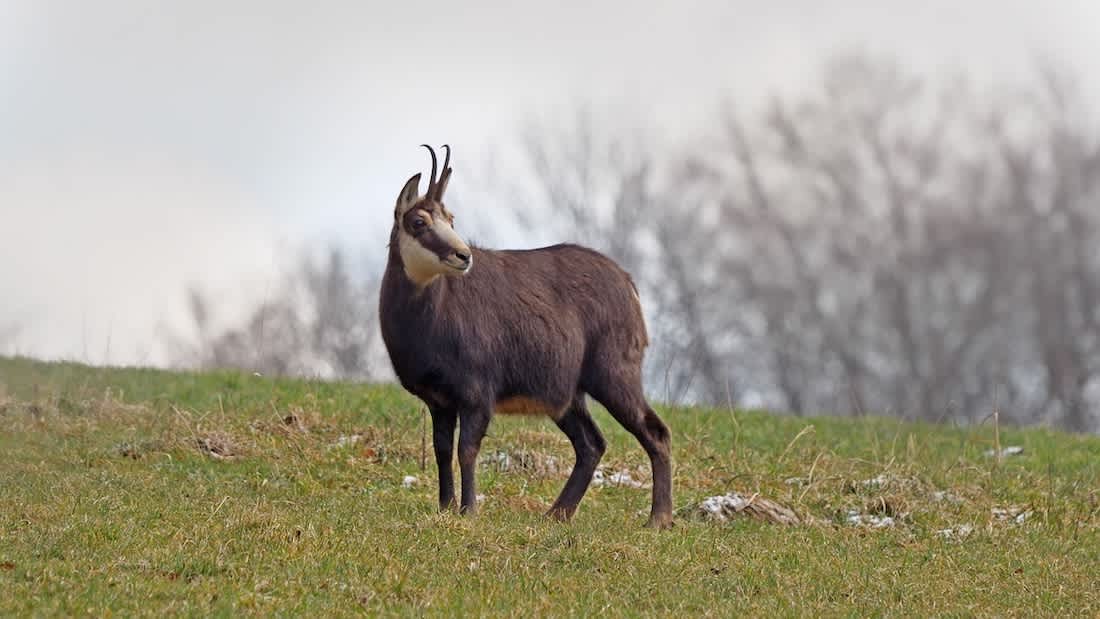
Keith Lusher 09.22.25

The canton of Fribourg in Switzerland has announced new enforcement measures for chamois hunting following concerns about compliance issues during the 2024 season. More than 25 percent of chamois rams killed last year failed to meet the specific age and sex criteria assigned to hunters through the lottery system.
Under the existing regulations, hunters receive random assignments specifying the age and gender of animals they are permitted to harvest. However, the high rate of non-compliance has prompted wildlife authorities to take stronger action to protect the chamois population.
Beginning with the 2025/26 hunting season, any hunter found guilty of an improper kill will face a two-year ban from chamois hunting. The Office for Forests and Nature designed this penalty to increase accountability among recreational hunters and ensure stricter adherence to wildlife management protocols.
For the upcoming season, authorities have authorized the harvest of 223 animals in the mountainous regions and lowland colony of the Little Saane, representing a slight increase from the previous year’s quota of 214. However, the hunting period will be reduced by one to help balance conservation efforts.

Many recreational hunters in Fribourg consider the two-year ban excessive punishment for what they characterize as identification mistakes that can occur during challenging field conditions. They argue that distinguishing between different age classes and sexes of chamois can be difficult, particularly in poor lighting, dense vegetation, or when animals are moving quickly.
Some hunters contend that the harsh penalty fails to account for the inherent challenges of wildlife identification in mountainous terrain. They point out that even experienced hunters can make honest mistakes when trying to determine an animal’s age or sex from a distance, especially given the split-second decisions often required during hunting encounters.
The hunting community remains divided on the issue. While some hunters view the stricter measures as an overreach by authorities, others acknowledge that the high violation rate damages the credibility of recreational hunting and believe stronger enforcement may be necessary to maintain public support for hunting programs.
Wildlife management experts note that hunters can determine a chamois ram’s age and sex by observing several characteristics, including body size, horn thickness and shape, behavioral patterns, and coat features. While proper identification requires careful observation, these distinguishing traits make appropriate target selection achievable with adequate attention.

The regulations serve broader conservation purposes beyond individual hunting ethics. Wildlife authorities stress that hunting quotas and restrictions help maintain ecosystem balance by preventing overharvesting that could threaten species populations. When hunting is not properly regulated, it can disrupt natural predator-prey relationships and lead to environmental imbalances.
So-called “Biodiversity protection” also factors into these enforcement decisions. Overhunting of valuable species can push populations toward endangerment or extinction, creating cascading effects throughout local ecosystems. Strict penalties for violations help ensure that hunting continues to support rather than undermine wildlife conservation goals.
The new measures reflect ongoing tensions between recreational hunting traditions and modern wildlife management science. While hunters value their sporting opportunities, conservation authorities must balance those interests against population sustainability and ecosystem health.
The shortened hunting season and increased penalties represent the canton’s commitment to evidence-based wildlife management. Whether these measures will successfully reduce violation rates and improve species protection remains to be seen as the 2025/26 season approaches.
Trending Products












